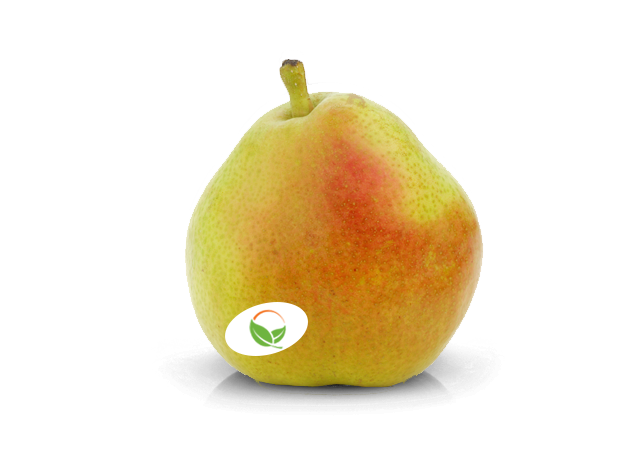Pears, d’Anjou

Availability:
| J | F | M | A | M | J | J | A | S | O | N | D |
Description:
Juicy and sweet, d’Anjou pears have an excellent texture. They are an all-purpose pear that can be used for poaching, baking, cooking, and eating out of hand.
There are two main families of pears: European and Asian. European is the most common and what we think of when referring to a pear with their elongated neck and a rounded bulbous bell shape on the bottom half (pyriform). Asian pears, on the other hand, look more like apples and are sometimes sold as Apple Pears. As you may have guessed, d’Anjou pears are European pears.
The best way to check for ripeness is to press on the stem end, if it yields to gentle pressure and it smells like a pear—you’re ready to go. There is a mild color change when ripe.
Different pear varieties have different kitchen roles and selecting the best one for the job can make a difference. Please see Produce 101: Pears for more info on the different varieties of pears, as well as the best way to ripen pears.
Recommended Storage
When handling pears, take care. They are highly susceptible to bruising and scarring, as well as skin slip, so don’t stack heavy things on top of the cases, don’t drop the cases. Treat them delicately, especially when ripe.
The recommended optimum storage temperature is 32° – 40°F. The temperature fluctuates from the front to the back of the cooler due to the location of the cooling unit and frequency of the door being opened. Download our PDF for more cooler storage hints.
The other big concern is pears produce a lot of ethylene—keep them away from sensitive items to maximize the produce shelf-life of everything in your cooler.
Check out what’s going on this week. For our latest market update, please see The FreshPress.
You can also click here to be notified when we post fresh new videos.


